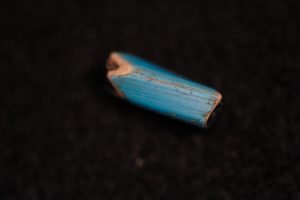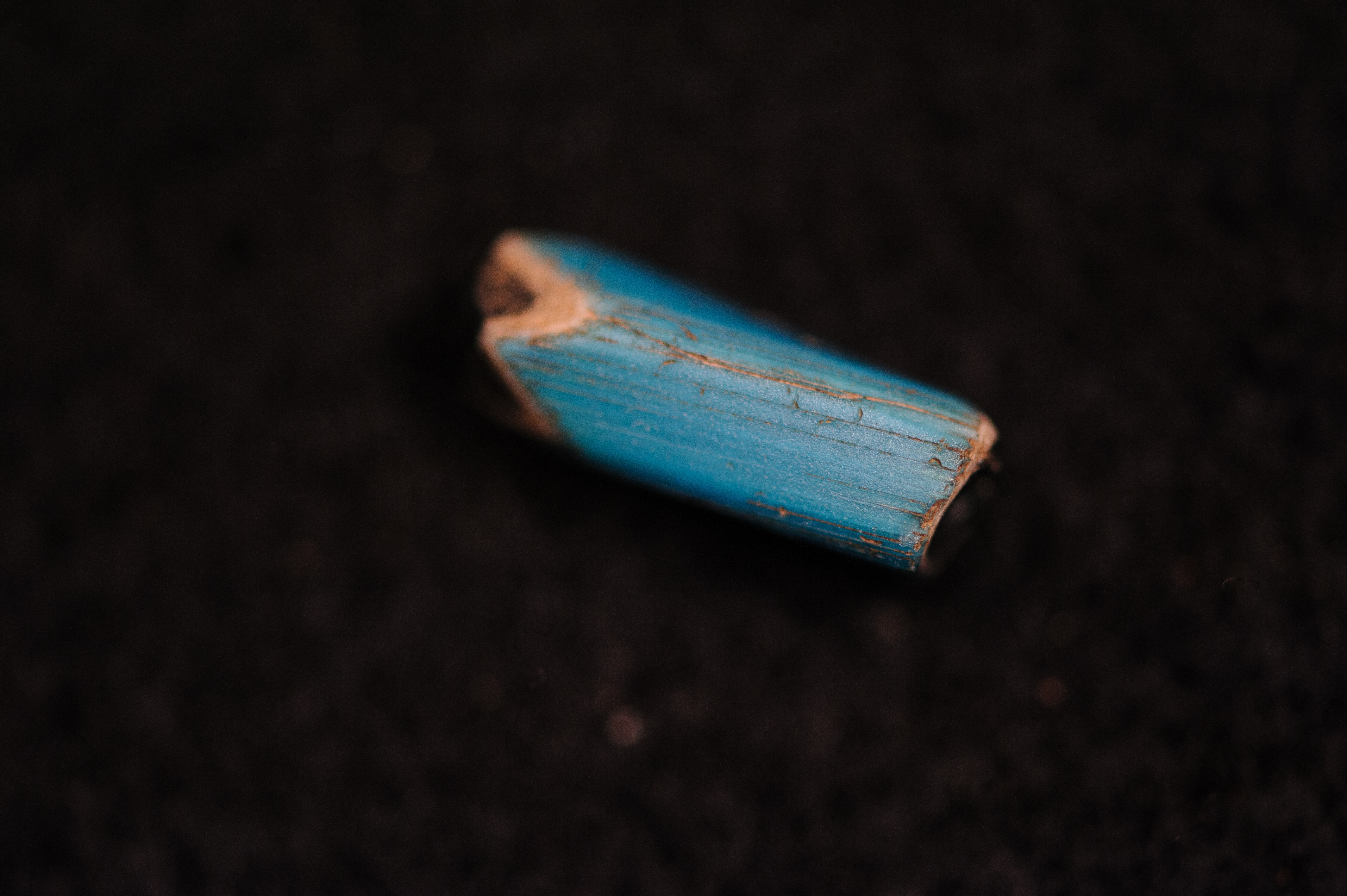
The Nueva Cadiz twisted glass bead is square in profile and measures just a bit over half an inch long and an eighth of an inch wide. Beads of this type were first manufactured in the 16th century, most likely in the glass works of Venice, Italy. Nueva Cadiz beads were an important colonial trade good, and have been found throughout the extent of Spain’s American empire, from Venezuela and Mexico north to Texas and Florida. In the southeastern United States, they are mainly associated with the expeditions of Panfilo de Narvaez in 1527 and Hernando de Soto in 1539.
This bead was found in Talladega County in an archaeological site at the junction of the Coosa River and Choccolocco Creek. The site, now beneath the surface of Logan Martin Lake, featured three dwellings from a Late Mississippian village. The bead was found on the floor of the youngest structure, hidden beneath a potsherd. A layer of burnt clay and daub indicated that the dwelling had burned soon after the bead had been hidden, but had never been rebuilt.
Given the tight context for the bead and the dates involved, the archaeologists who studied the site believe this is one of the few, if not the only, archaeological specimens from Alabama that can be definitively traced to Hernando de Soto’s expedition.
The Archaeological Collection holds more than 1 million artifacts, associated documents and photographic images documenting the history of human occupation in the southeastern United States and beyond. Artifacts from Moundville Archaeological Park, the site of one of the largest prehistoric Native American settlements in North America, form a major part of the collection. The collection is housed at the Erskine Ramsay Archaeological Repository, and supports collection–based research both at home and abroad by students, academics and professionals.
WIlliam R. Allen, archaeology collections manager for The University of Alabama Museums, provided the above information.
Contact
Kim Eaton, UA media relations, 205/348-8325 or kkeaton@ur.ua.edu
